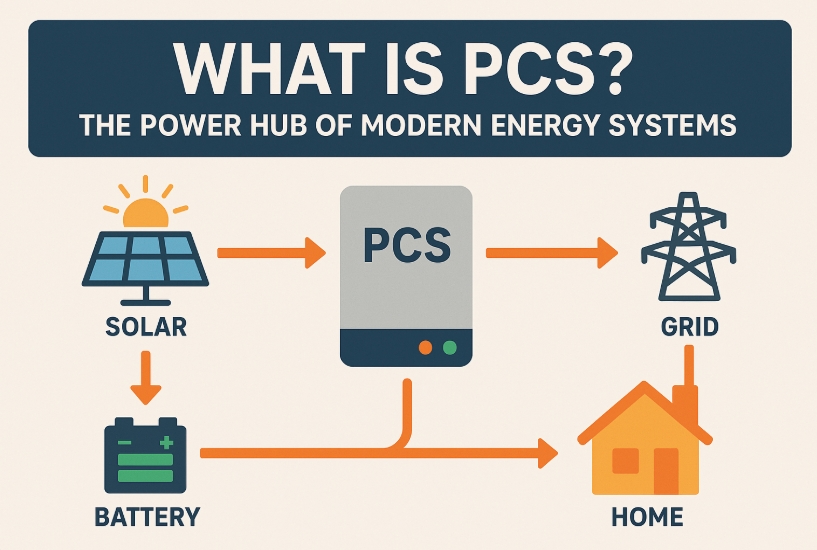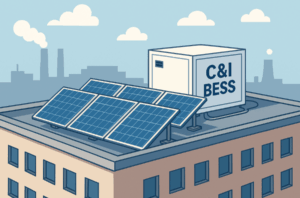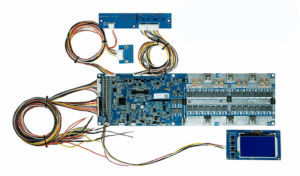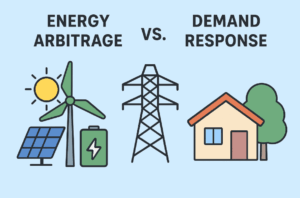- You have no items in your shopping cart
- Subtotal: $0.00

In modern renewable energy and energy storage systems, one crucial component that often goes unnoticed but plays a major role is the Power Conversion System, commonly called PCS.
Power Conversion System acts like a translator between energy sources and the devices using or storing that energy. If you’re working with solar panels, batteries, or building a microgrid, understanding Power Conversion System is essential.
📌 PCS Meaning: What Does It Do?
A Power Conversion System (PCS) is an electronic system that converts and manages energy between different forms—usually between AC (Alternating Current) and DC (Direct Current).
- Solar panels produce DC power, but most homes and grids use AC power.
- Batteries store DC power, but appliances require AC.
- The grid operates on AC, but storage systems often use DC.
PCS acts as a bridge between all these systems, ensuring safe and efficient energy flow.
⚙️ Components of a PCS
A Power Conversion System typically includes several sub-systems depending on the application, such as:
1. Inverter
Converts DC to AC. Essential for feeding power into the grid or household appliances.
2. Rectifier
Converts AC to DC. Used when charging batteries from an AC source like the grid.
3. DC/DC Converter
Manages voltage levels between battery banks and solar PV arrays.
4. Controller/Communication Interface
Monitors performance, controls charging/discharging cycles, and interfaces with grid signals or smart systems.
🔄 Types of Power Conversion System Based on Applications
Power Conversion Systems can vary depending on their use. Let’s break them down:
1. Grid-Tied PCS
Used to integrate battery systems with the electrical grid.
- Function: Charge from and discharge to the grid.
- Common Use: Commercial energy storage systems, peak shaving, frequency regulation.
2. Off-Grid PCS
Used in remote areas or where there’s no access to the main power grid.
- Function: Manage power from solar panels and store it in batteries.
- Common Use: Rural electrification, remote homes, island microgrids.
3. Hybrid PCS
Combines features of both on-grid and off-grid systems.
- Function: Balances power from solar, batteries, and the grid.
- Common Use: Residential or commercial setups with solar + storage.

⚡ Real-Life Example: Solar + Battery + Grid System
Let’s say you have a solar setup with battery storage at your home:
- Daytime: Solar panels generate DC → PCS converts to AC for your home.
- Excess power: Power Conversion System routes extra DC to battery storage (still DC).
- Night: PCS takes DC from batteries → converts to AC to power your appliances.
- Shortfall: Power Conversion System draws power from the grid, if needed.
In each step, Power Conversion System ensures voltage levels are right, conversion is efficient, and safety protocols are in place.
🧠 Why is PCS Important in Energy Storage?
PCS is not just about converting power. It brings several other critical benefits:
✅ Efficiency
Modern Power Conversion System systems use IGBT or SiC technology to provide high efficiency (>98%) during conversion.
✅ Safety
Overvoltage, short-circuit, and thermal protection keep your system safe.
✅ Flexibility
It supports multi-directional flow: from solar to grid, grid to battery, or solar to battery.
✅ Grid Support
Advanced Power Conversion System units can offer services like:
- Frequency control
- Voltage regulation
- Black start capability (restarting grid sections during blackout)
🛠️ Where is PCS Used?
Power Conversion System is found in various systems across industries:
| Application | Description |
|---|---|
| BESS (Battery Energy Storage System) | Integrates batteries with grid and renewables |
| Solar PV Plants | Connect solar energy with AC grid |
| EV Charging Stations | Manages DC fast charging and grid interaction |
| Microgrids | Helps balance generation, load, and storage in isolated setups |
| UPS Systems | Converts power during outages to support critical loads |
🔋 PCS vs Inverter: What’s the Difference?
Many people confuse PCS with inverters. Here’s the distinction:
| Feature | Inverter | PCS |
|---|---|---|
| Function | Only DC to AC | Multi-directional conversion (AC↔DC, DC↔DC) |
| Used for | Simple solar setups | Complex systems like solar + battery + grid |
| Grid Control | Limited | Advanced, supports grid services |
So while every Power Conversion System includes an inverter, not every inverter qualifies as a full PCS.
🧮 How to Choose the Right PCS?
Here are some factors to consider when selecting a Power Conversion System for your project:
- Rated Power (kW): Should match your load or system size.
- Voltage Range: Compatible with your battery and solar system.
- Conversion Efficiency: Higher is better (look for 97–99%).
- Bidirectional Operation: Essential for battery charging/discharging.
- Certifications: UL, CE, or local grid standards.
- Communication Protocols: MODBUS, CANbus, or Ethernet for integration.
- Cooling System: Air or liquid cooling depending on size and location.
🌱 Future of Power Conversion System: Smarter & Greener
The Power Conversion System of the future will be more intelligent, offering real-time optimization using AI and machine learning. With growing adoption of smart grids, V2G (vehicle-to-grid), and decentralized power, PCS will become even more essential.
Manufacturers are also moving toward modular PCS units that can scale as demand grows, especially for data centers, EV fleets, and grid-scale BESS.
📝 Final Thoughts
A Power Conversion System (PCS) is like the “brain and heart” of modern energy systems. It converts, controls, and balances energy flows from different sources to meet our needs efficiently and safely. Whether you’re building a home solar system, a microgrid, or a utility-scale battery plant, choosing the right Power Conversion System is key to performance and reliability.





[…] Function:The PCS is responsible for converting electrical energy between direct current (DC) from batteries a… […]